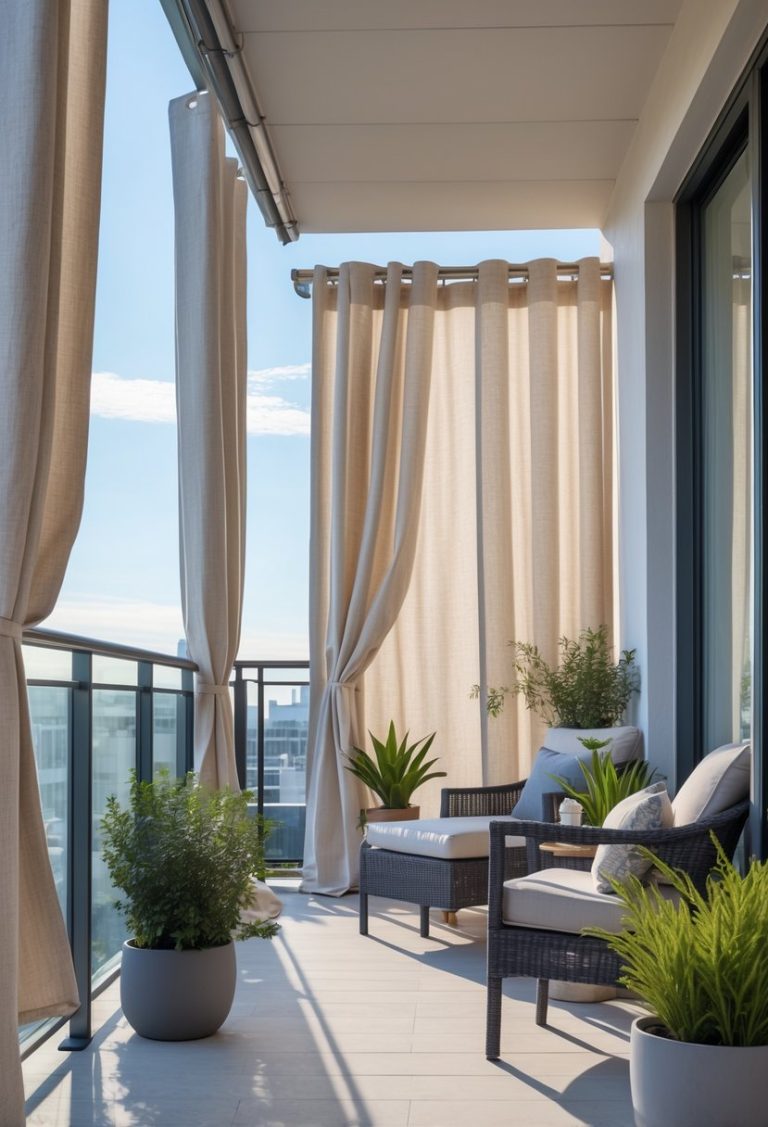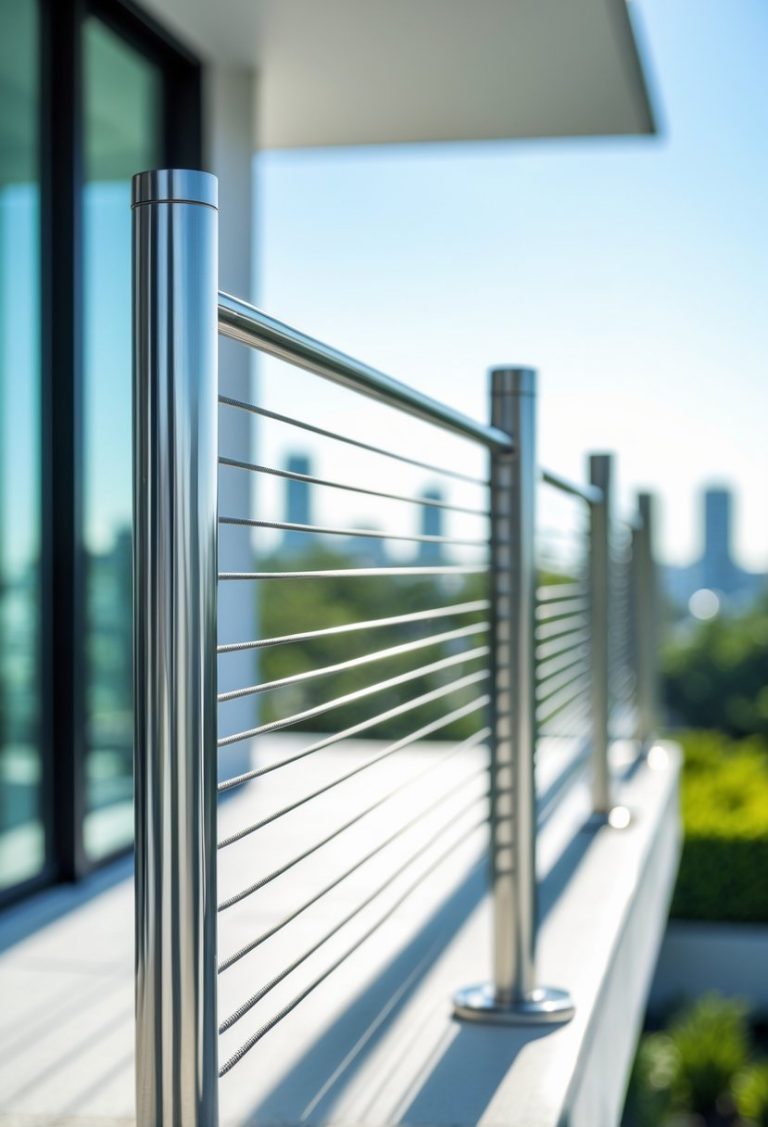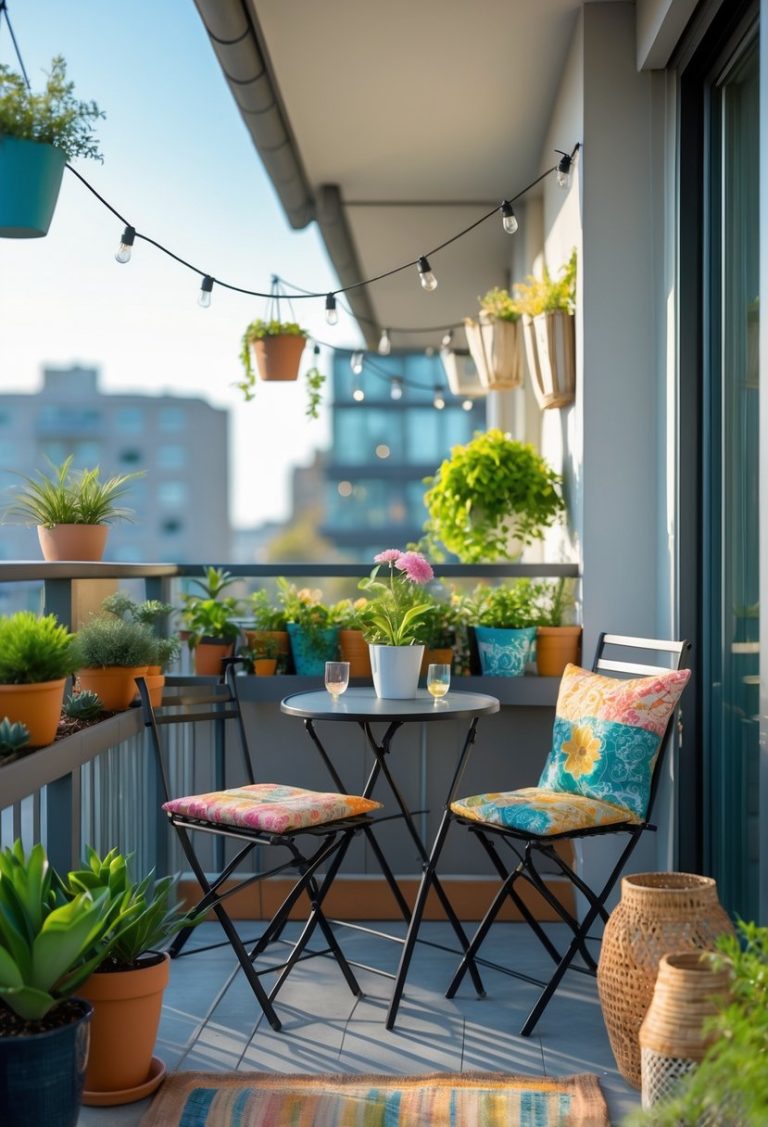Iron Balcony Railing Ideas: 9 Durable and Stylish Designs to Consider
Iron balcony railings are a popular choice for both residential and commercial buildings. They provide safety and support while adding a stylish element to the exterior of a property. Many people choose iron for its strength and classic look.

Iron balcony railings combine durability with aesthetic appeal, making them a practical and attractive option for outdoor spaces. They come in various designs and materials, allowing customization to fit different architectural styles. This makes iron railings a versatile addition to any balcony.
1) Classic Wrought Iron Scrollwork

Classic wrought iron scrollwork is known for its elegant curves and timeless style. It often features detailed spirals and loops that add visual interest.
This type of railing is strong and durable, made from wrought iron that lasts for years. It can suit both traditional and modern homes, enhancing the look of any balcony.
2) Minimalist Wrought Iron Balusters

Minimalist wrought iron balusters feature simple, straight bars. They offer a clean and modern look that fits many styles.
These balusters are strong and durable, making them a safe choice for balconies. Their open design also allows clear views without heavy decoration.
3) Modern Geometric Iron Railings

Modern geometric iron railings use straight lines and clear shapes. They often feature squares, triangles, or abstract patterns.
These designs fit well with contemporary homes. They add style without being overly complex.
The railings also provide safety and durability. They blend function with modern visual appeal.
4) Rust-Resistant Stainless Steel Iron Railings

Stainless steel iron railings offer strong resistance to rust and corrosion. They use alloys like chromium and nickel to protect against moisture and weather.
These railings last longer outdoors with less maintenance compared to regular iron. Grades such as AISI 304 and 316 are common for their durability.
They are often chosen for both safety and a clean, modern look on balconies.
5) Bolt-On Custom Iron Balcony Systems
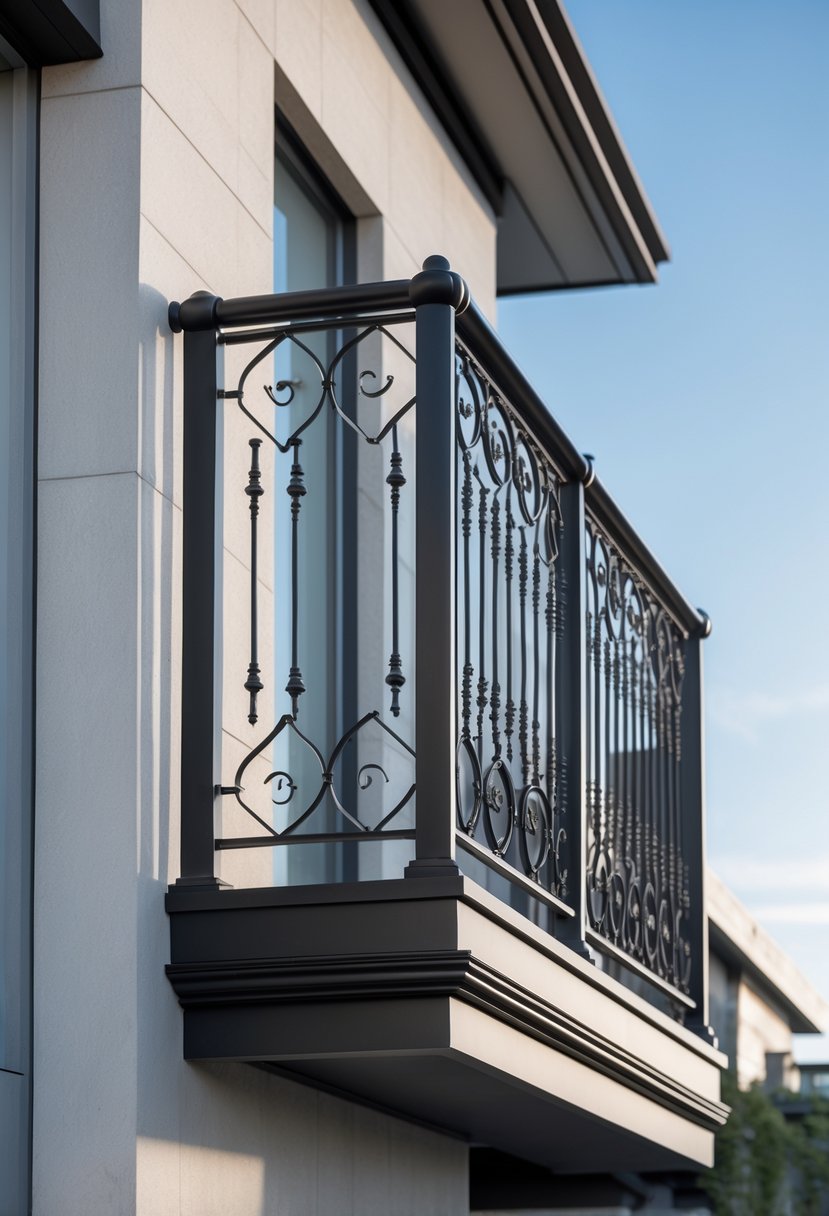
Bolt-on iron balcony systems attach directly to existing walls. They provide a strong, durable railing option without major structural changes.
These systems are often custom-made to fit the exact size and shape needed. This makes them versatile for many building styles.
They are designed for relatively quick installation. Many come prefabricated and pre-painted for ease of use and long-lasting protection.
6) Ornate Victorian Iron Designs

Victorian iron balcony railings often feature detailed, decorative patterns. These designs include scrolls, leaves, and geometric shapes that create a classic look.
The craftsmanship shows fine attention to detail and adds elegance to buildings. People choose these railings to enhance historical or vintage-style homes.
7) Aluminum-Iron Hybrid Railings
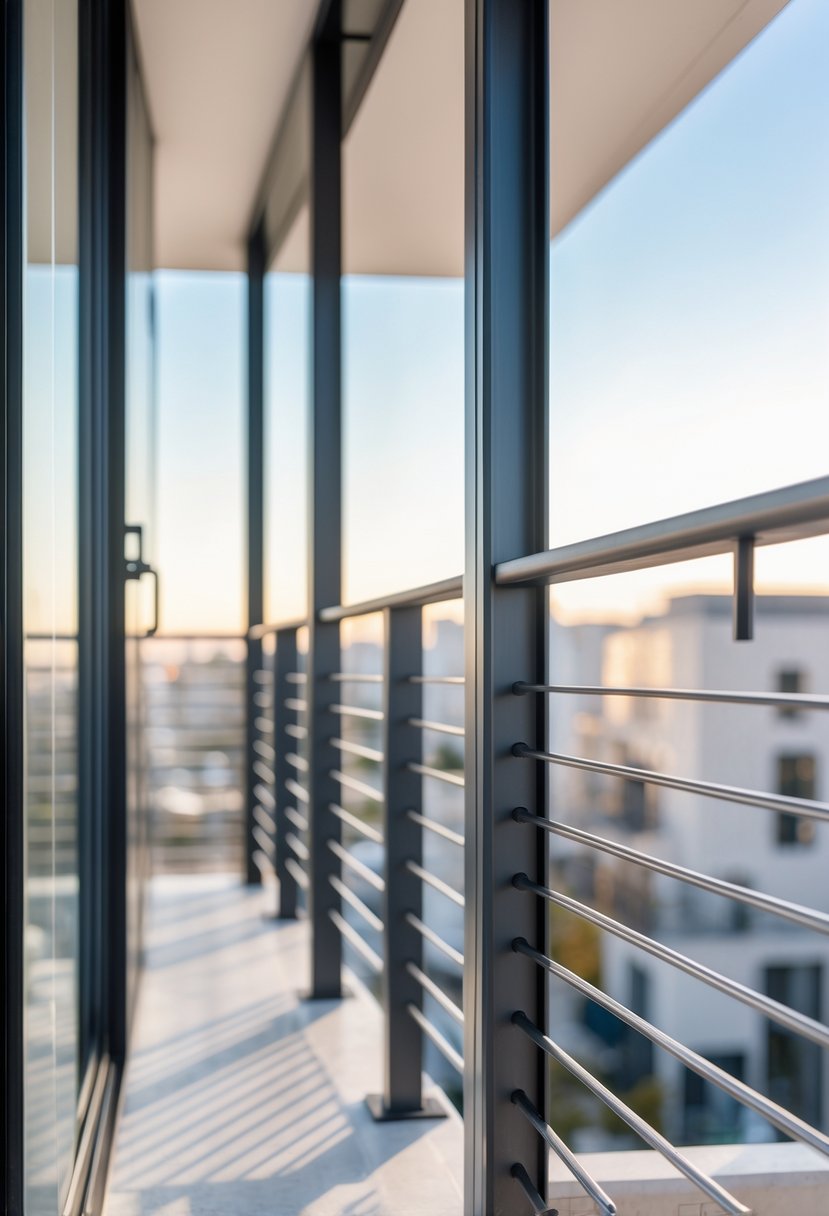
Aluminum-iron hybrid railings combine the strength of iron with the light weight of aluminum. They often use aluminum for rails and iron for posts or decorative elements. This mix gives good durability and a modern look without heavy weight. Fabrication usually involves powder coating to protect against rust and wear. Hybrid railings fit well in many architectural styles.
8) Tempered Glass with Iron Frames
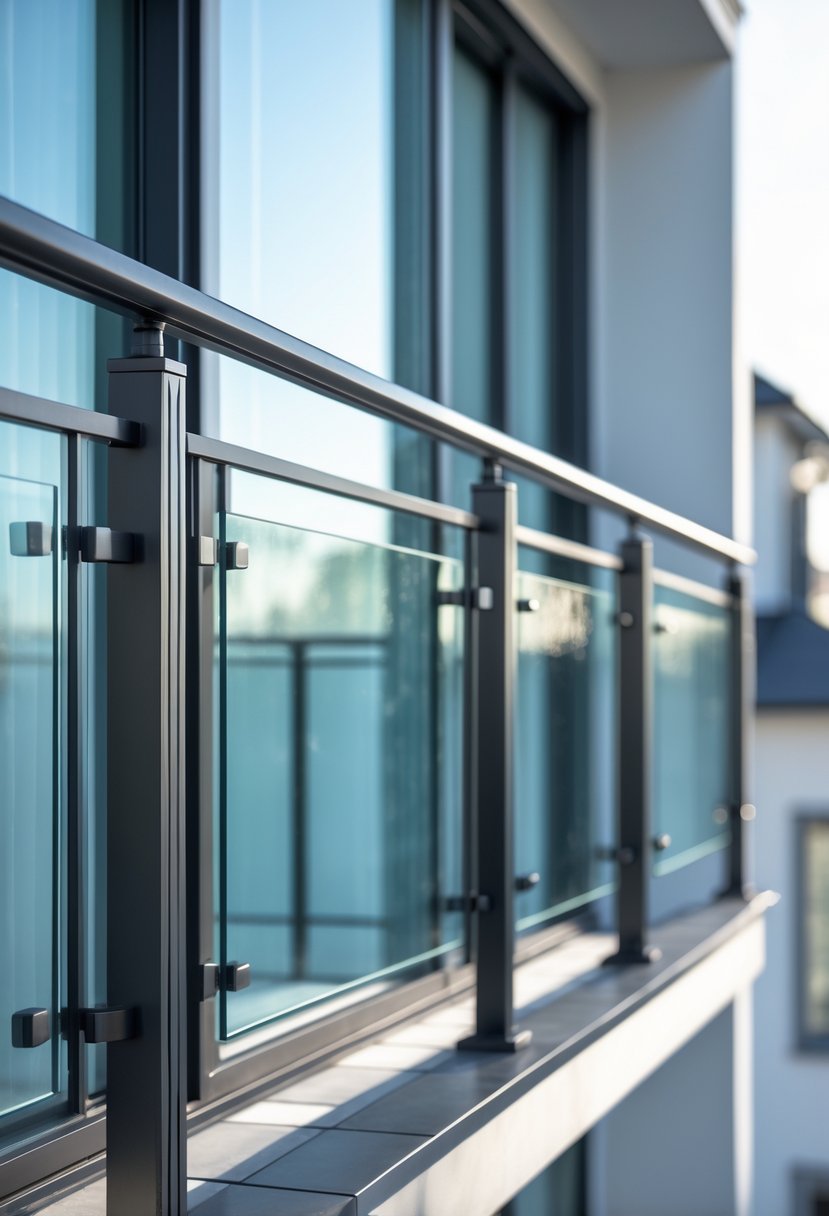
Tempered glass is strong and safe, making it a common choice for balcony railings. When combined with iron frames, it offers both durability and style.
The iron frame provides solid support, while the glass keeps the view clear and open. This mix fits well with modern and classic homes.
9) Bronze-Toned Iron Balcony Railings

Bronze-toned iron railings offer a strong and stylish option for balconies. Their dark, warm color adds a classic look that works well with many building styles.
These railings can be shaped to fit different designs. They are durable and suitable for both indoor and outdoor use.
Iron Balcony Railing Design Considerations
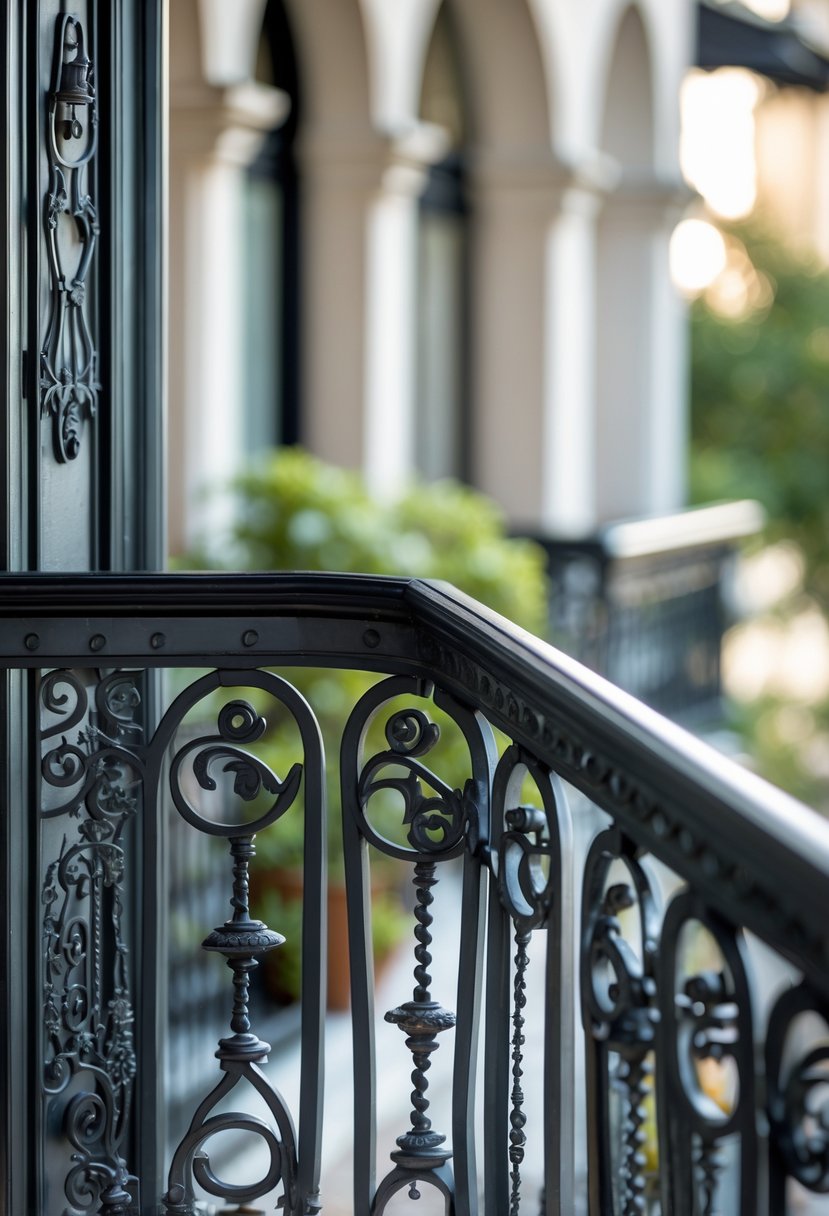
Iron balcony railings require careful thought about style and safety. Choosing the right look and making sure the railing meets legal rules are key to a successful project. The design must balance beauty with function to provide both curb appeal and security.
Aesthetic Styles and Customization
Iron railings offer many options for styles, from simple modern lines to intricate traditional patterns. They can be shaped with scrollwork, geometric shapes, or floral designs. This flexibility lets homeowners create a look that fits their home’s architecture.
Custom designs can include features like panels, grills, or glass inserts to add texture and interest. The finish is also important; powder-coated paint or rust-resistant treatments improve durability and appearance. Iron’s strength allows for thin profiles without losing safety, helping maintain an open view.
Building Codes and Safety Standards
Iron balcony railings must follow specific rules to ensure safety. Common requirements include a minimum height, usually around 36 to 42 inches, and spacing between bars no wider than 4 inches to prevent falls.
The railing must withstand a force of at least 200 pounds applied in any direction. Proper installation is also critical to secure the railing firmly to the balcony structure.
Local codes may vary, so checking with building authorities before installation is essential. Compliance protects occupants and avoids legal or insurance issues.
Maintenance and Longevity of Iron Balcony Railings

Iron balcony railings need regular attention to stay strong and attractive. Proper care helps prevent rust and damage from weather, extending the railing’s life significantly.
Rust Prevention and Care
Rust is the main enemy of iron railings. To prevent rust, the surface must stay dry and clean. Regular cleaning with water and a mild detergent removes dirt and debris that hold moisture.
Applying a protective coating, like paint or powder coating, creates a barrier against moisture and oxygen. This coating should be checked every year and repaired quickly if it chips or cracks.
If rust spots appear, they should be removed with a wire brush or sandpaper. After removing rust, the area needs to be primed and repainted to stop further corrosion.
Weather Resistance Measures
Iron railings face damage from rain, snow, and sun. Using weather-resistant coatings designed for outdoor metal improves durability against these elements.
Positioning the railing where water drains away quickly helps. Avoid areas prone to standing water, which speeds corrosion.
Seasonal checks are important. In winter, snow and ice should be cleared gently to avoid surface damage. In hot weather, inspecting for paint cracks or fading can prevent deeper damage.
Overall, protective finishes combined with proper placement reduce long-term weather damage to iron railings.

